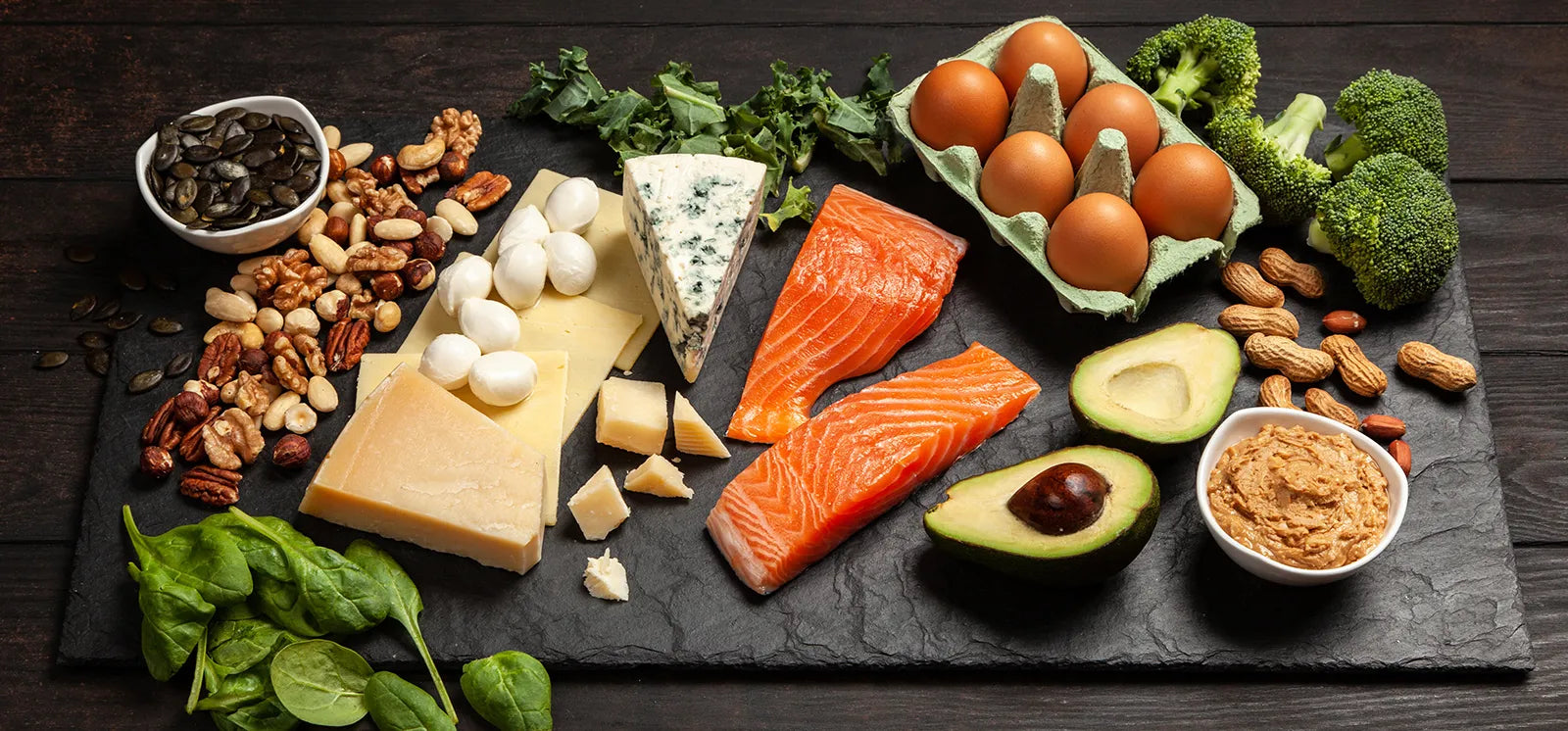Your Cart is Empty

You’ve probably heard about the Keto diet by now; the low-carb, high-fat lifestyle that’s been taking the health and fitness world by storm. But what’s the deal with it, and how can it work for you?
Let's break it down in a way that makes sense, so you can decide if it's the right fit for your goals.
The ketogenic (Keto) diet is all about cutting carbs and replacing them with healthy fats. This drastic reduction in carbs pushes your body into a state calledketosis, where it burns fat for fuel instead of glucose. Now, you might be thinking:“Won’t eating more fat just make me gain weight?” Not necessarily. The key is moderation. It’s about shifting the body’s metabolism and making it more efficient at using fat as energy, helping you burn fat more easily and effectively.
But keep in mind: Overeating anything, even healthy fats, can lead to weight gain. So while foods like avocados, fatty fish, and coconut oil are staples of the Keto diet, balance is still crucial.
When your body enters ketosis, it starts using fat (and ketones, which are produced by the liver) as its primary energy source. The benefits can be game-changing:
Fat Burning:Once in ketosis, your body becomes incredibly efficient at burning fat, even those stubborn fat stores around your belly.
Weight Loss:Keto can help you shed pounds quickly. Studies show that the diet can lead to rapid fat loss, especially in the first few weeks.
Increased Energy: By fueling your body with fat, you avoid the blood sugar spikes and crashes that come with carbs, leaving you with more consistent energy throughout the day.
Better Mental Clarity:Many people report feeling sharper and more focused once they switch to a Keto diet. That’s because your brain starts using ketones, a cleaner fuel, instead of glucose.
If you're thinking about going Keto, here’s a quick rundown of what you should be eating:
Healthy fats: Olive oil, avocado oil, coconut oil, grass-fed butter
Protein:Eggs, grass-fed meat, chicken, turkey, fatty fish (salmon, mackerel, sardines)
Low-carb veggies:Spinach, kale, cauliflower, zucchini, broccoli, and other non-starchy veggies
Full-fat dairy:Cheese, heavy cream, Greek yogurt (unsweetened)
Nuts and seeds:Almonds, walnuts, chia seeds, flaxseeds
Condiments: Salt, pepper, herbs, and spices
The Keto diet is all aboutlimiting carbs, so here’s what to avoid:
High-carb foods like bread, pasta, rice, and sugary snacks
Fruits (with the exception of small amounts of berries)
Starchy vegetables like potatoes, sweet potatoes, and corn
Processed foods and sugary drinks
Legumes and beans (peas, lentils, chickpeas)
Once you’ve made the switch to Keto, you want to know if your body has actually entered ketosis. Here are a few signs that you're on the right track:
Increased urination (this is a common early sign)
A dry mouth or bad breath (sometimes referred to as "Keto breath")
Decreased appetite (you might notice you're not as hungry)
Increased energy and mental clarity
You can also use testing strips or devices to measure your ketone levels, but these signs should help you gauge your progress.
The Keto diet can be incredibly effective for weight loss, fat burning, and mental clarity, but it’s not for everyone. If you’re considering giving it a shot, it’s important to be mindful and consult with your doctor, especially if you have any underlying health conditions.
Keto works best when paired with an active lifestyle, so if you’re hitting the gym or staying active throughout the day, this diet can help fuel your workouts and keep you performing at your best.
If you’re ready to take your body to the next level, give Keto a try. It’s about more than just burning fat, it’s about transforming the way you fuel yourself for success.
P.S.Doing keto or thinking about it? Our products are made to get you into ketosis quicker and keep you feeling great all day. Give them a try here.
Sign up to get the latest deals, exclusive offers, Keto education & more!